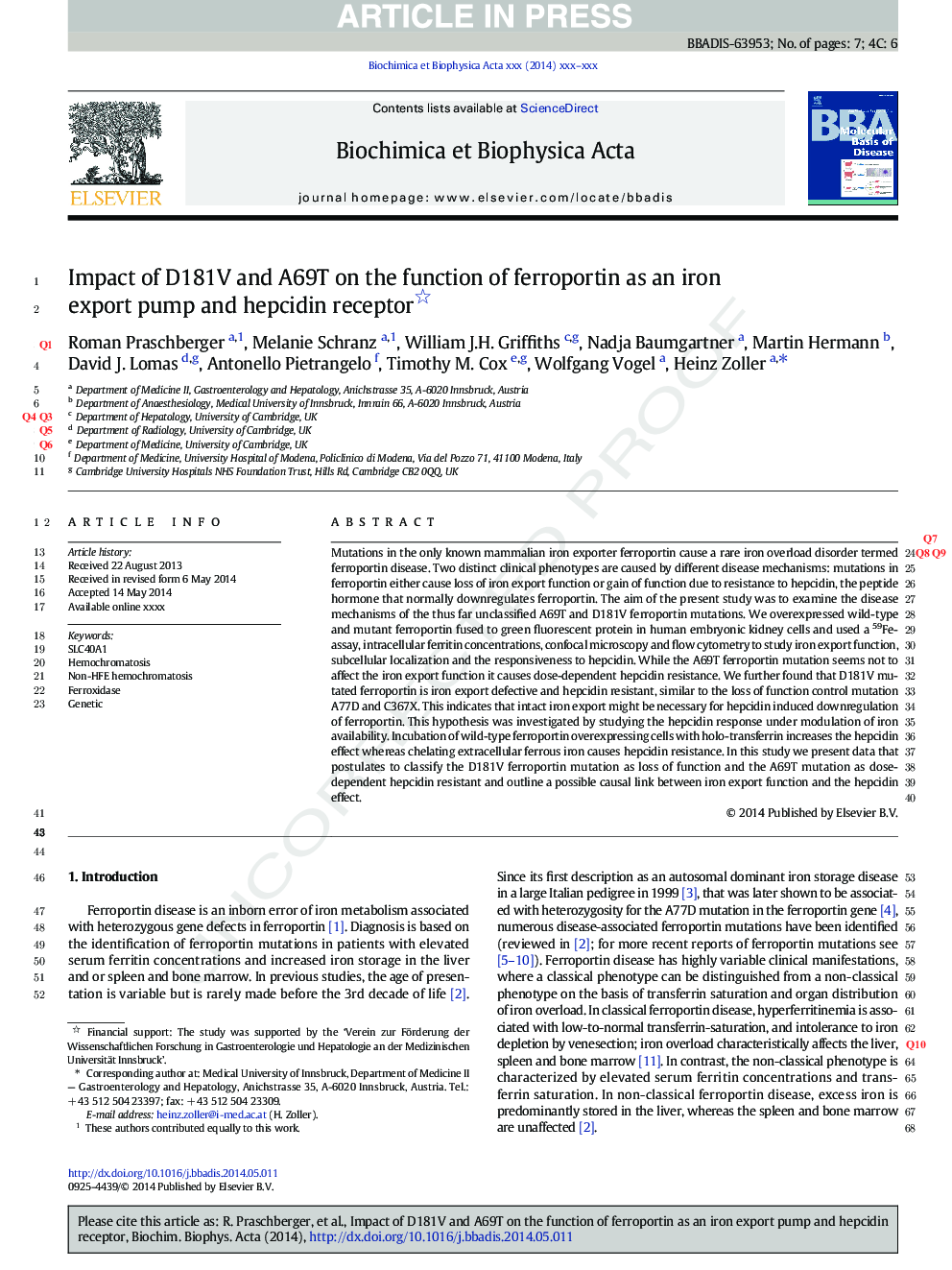| Article ID | Journal | Published Year | Pages | File Type |
|---|---|---|---|---|
| 8260119 | Biochimica et Biophysica Acta (BBA) - Molecular Basis of Disease | 2014 | 7 Pages |
Abstract
Mutations in the only known mammalian iron exporter ferroportin cause a rare iron overload disorder termed ferroportin disease. Two distinct clinical phenotypes are caused by different disease mechanisms: mutations in ferroportin either cause loss of iron export function or gain of function due to resistance to hepcidin, the peptide hormone that normally downregulates ferroportin. The aim of the present study was to examine the disease mechanisms of the thus far unclassified A69T and D181V ferroportin mutations. We overexpressed wild-type and mutant ferroportin fused to green fluorescent protein in human embryonic kidney cells and used a 59Fe-assay, intracellular ferritin concentrations, confocal microscopy and flow cytometry to study iron export function, subcellular localization and the responsiveness to hepcidin. While the A69T ferroportin mutation seems not to affect the iron export function it causes dose-dependent hepcidin resistance. We further found that D181V mutated ferroportin is iron export defective and hepcidin resistant, similar to the loss of function mutations A77D and C367X. This indicates that intact iron export might be necessary for hepcidin-induced downregulation of ferroportin. This hypothesis was investigated by studying the hepcidin response under modulation of iron availability. Incubation of wild-type ferroportin overexpressing cells with holo-transferrin increases the hepcidin effect whereas chelating extracellular ferrous iron causes hepcidin resistance. In this study we present data that postulates to classify the D181V ferroportin mutation as loss of function and the A69T mutation as dose-dependent hepcidin resistant and outline a possible causal link between iron export function and the hepcidin effect.
Related Topics
Life Sciences
Biochemistry, Genetics and Molecular Biology
Ageing
Authors
Roman Praschberger, Melanie Schranz, William J.H. Griffiths, Nadja Baumgartner, Martin Hermann, David J. Lomas, Antonello Pietrangelo, Timothy M. Cox, Wolfgang Vogel, Heinz Zoller,
